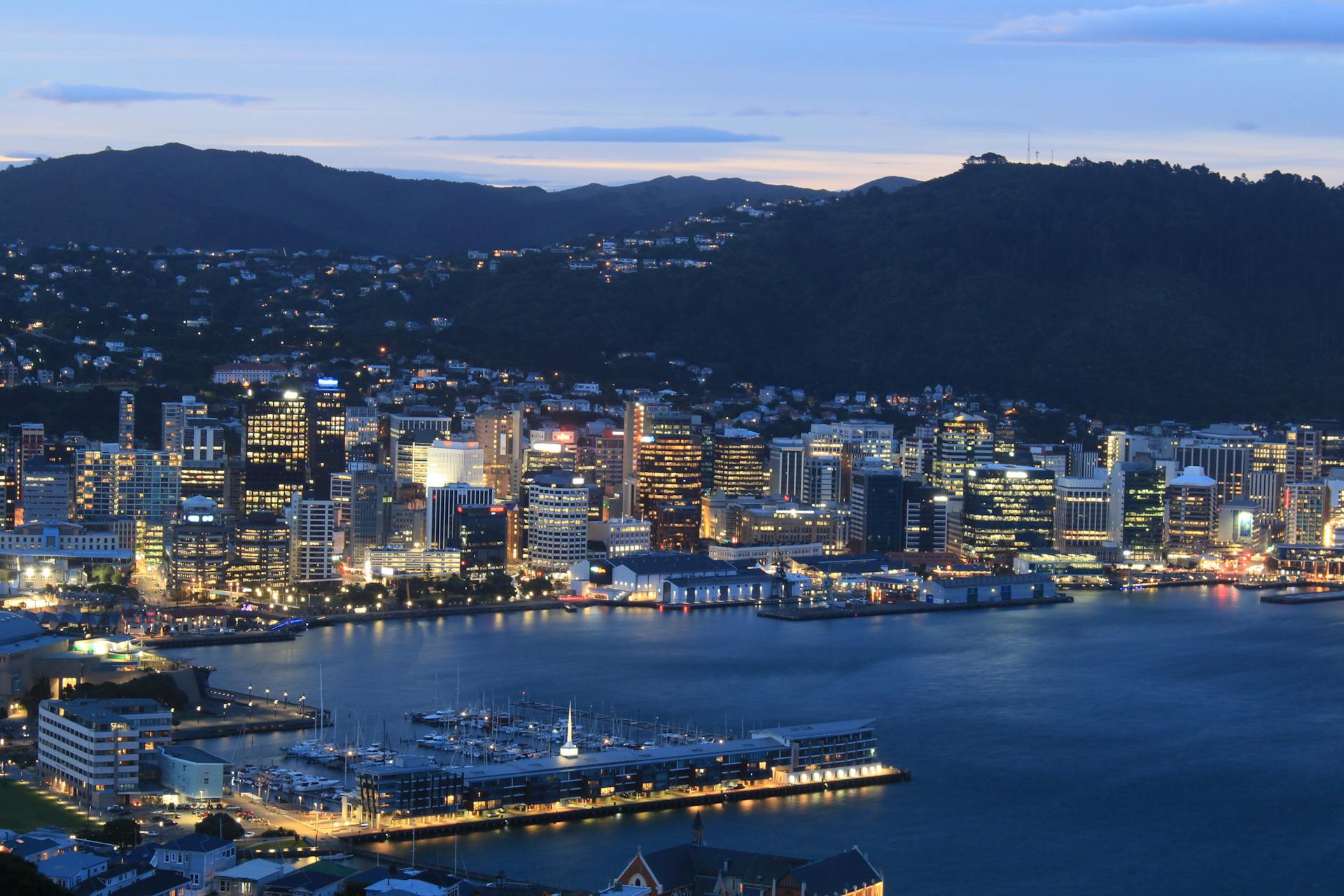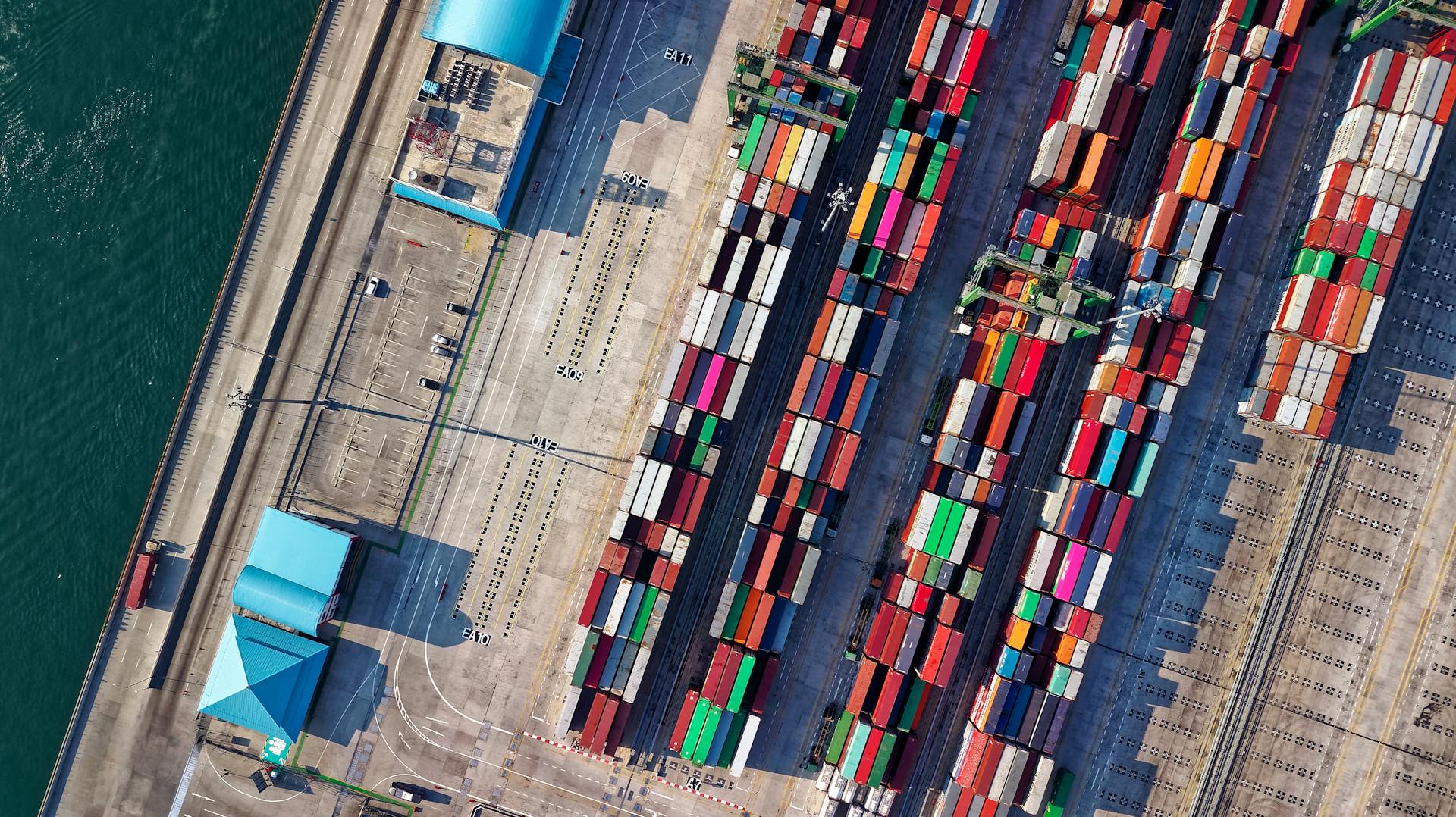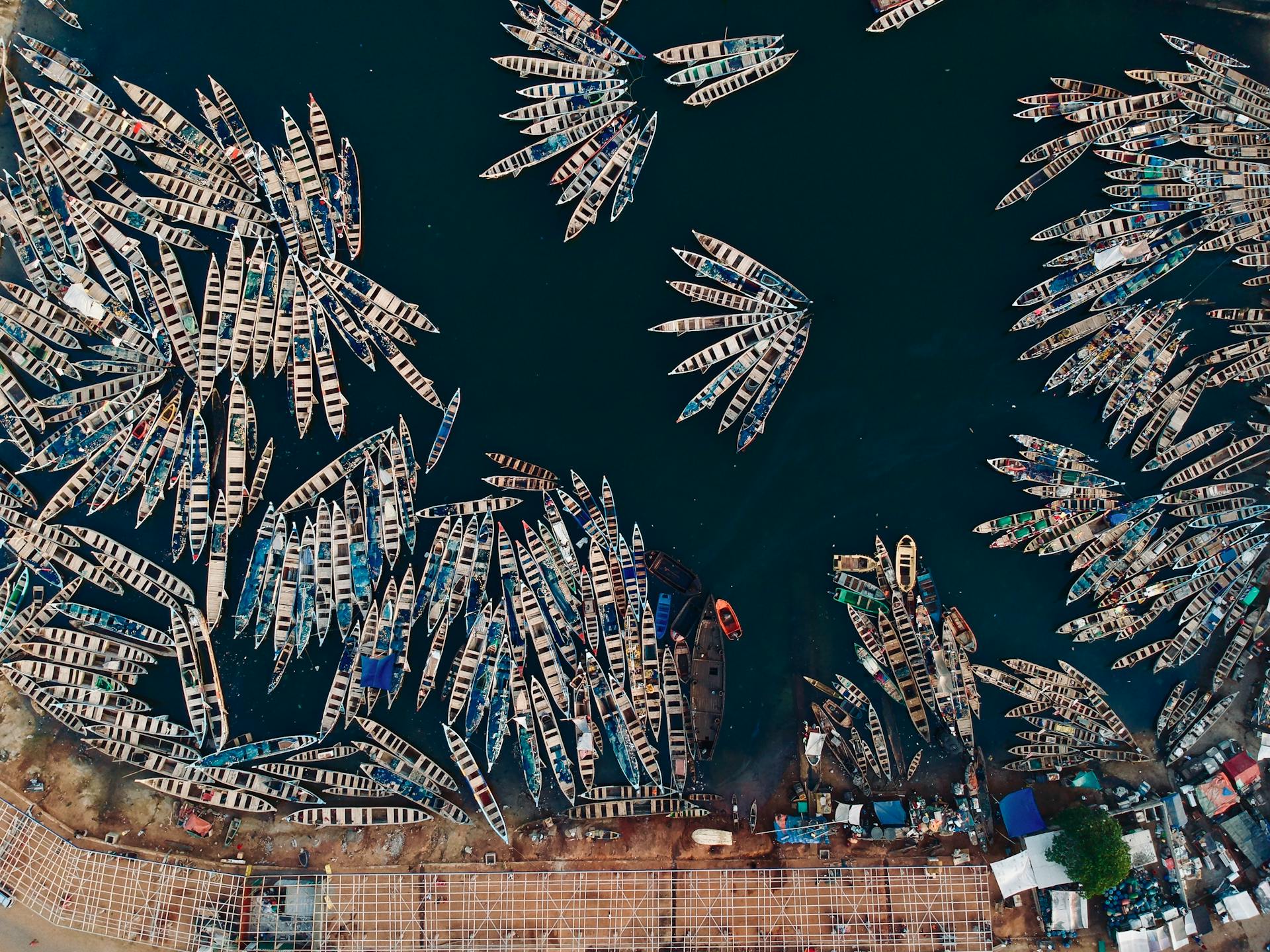
Tema Harbour is a significant economic hub in Ghana, and it's great to see how it's making a positive impact on the country's economy. The harbour has been in operation since 1962, and it has undergone several expansions and upgrades over the years to improve its efficiency and capacity.
The harbour's strategic location on the Atlantic coast makes it an ideal gateway for international trade. It's situated about 25 kilometers east of Accra, the capital city of Ghana. This proximity to the capital city has contributed to the harbour's success, as it allows for easy access to transportation networks and markets.
Tema Harbour is a major source of revenue for the Ghanaian government, with the harbour generating significant revenue from customs duties and port fees. In 2020, the harbour recorded a total revenue of GH¢1.3 billion, a significant increase from previous years.
Location and Area
Tema Port is located in Ghana, West Africa, and is operated by Meridian Port Services (MPS), a joint venture between the Ghana Ports and Harbours Authority and Meridian Port Holdings.
The project aims to treble Tema Port's current traffic of about one million Twenty-foot Equivalent Units (TEUS).
AECOM, a global organization, has a team of port project management professionals working on the project, including specialists from nine nations and five continents.
The project will feature a 19-metre-deep port access channel, a new 1.4-kilometre-long quay for four container berths, and a 4-kilometre-long breakwater.
The expanded Tema Port will enable the port to accommodate some of the world's largest container ships, improving cargo-handling services and capacity.
AECOM's multinational staff will work with local Ghanaian specialists to oversee the construction of the port expansion facilities.
Infrastructure and Facilities
Tema Harbour's infrastructure is a key factor in its success as a major maritime trade hub. The port features various facilities designed to handle a diverse range of cargo, including containers, bulk goods, and vehicles.
The harbour boasts several berths that can accommodate different types of ships, with facilities catering to different types of cargo. This includes container terminals equipped with modern cranes and handling equipment.
Here are the different types of berthing facilities found at Tema Harbour:
- Container Terminals: Specialized in handling containerized cargo.
- Bulk Cargo Terminals: Facilities dedicated to unloading bulk materials, such as grains and minerals.
- Ro-Ro Facilities: Designed for roll-on/roll-off vessels, facilitating the transport of vehicles and heavy machinery.
Port History
The construction of the harbour was proposed by British Colonial Officers in the Gold Coast before its independence. They identified an old fishing village called Torman as the proposed site for the harbour's construction.
The town's name was changed to Tema after Ghana's independence due to rapid industrialization. This change was a direct result of the town's growing importance as a major industrial hub.
The construction of the harbour began in the 1950s under the leadership of Ghana's first president Kwame Nkrumah. The planning process was led by the award-winning city planner and first Ghanaian architect, Theodore S. Clerk.
Tema Harbour was officially opened in 1962 and was designed to accommodate the growing demand for a reliable shipping route, particularly for imports and exports in Ghana.
Infrastructure and Facilities
Tema Harbour is a crucial part of Ghana's maritime trade, with a robust infrastructure that supports a wide range of cargo handling activities.
The harbour features various facilities designed to handle different types of cargo, including containers, bulk goods, and vehicles.
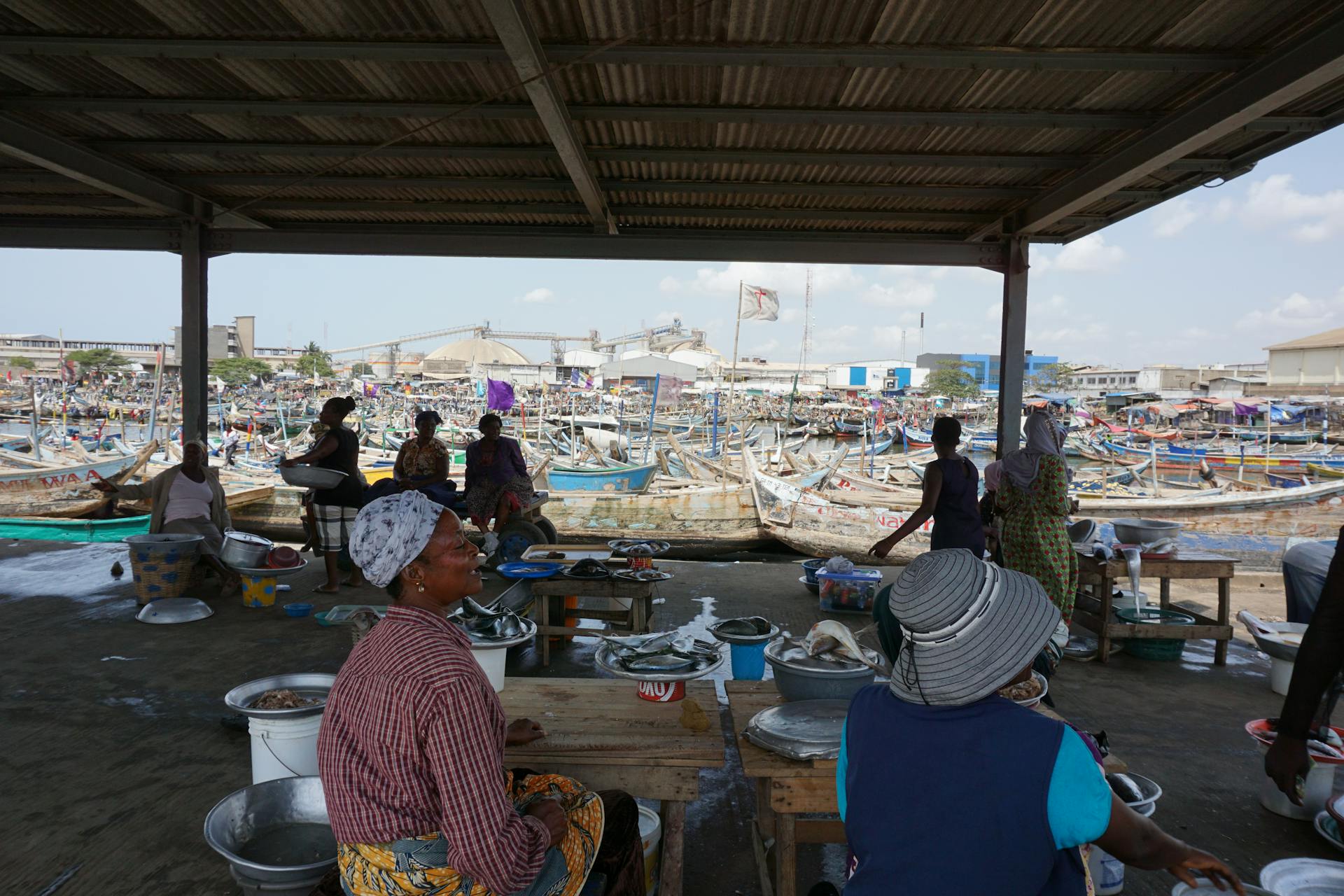
Its container terminals are equipped with modern cranes and handling equipment, allowing for efficient and safe containerized cargo handling.
The harbour also boasts several berths that can accommodate different types of ships, including container vessels, bulk cargo ships, and roll-on/roll-off vessels.
Here are the different types of berthing facilities at Tema Harbour:
- Container Terminals: Specialized in handling containerized cargo.
- Bulk Cargo Terminals: Facilities dedicated to unloading bulk materials, such as grains and minerals.
- Ro-Ro Facilities: Designed for roll-on/roll-off vessels, facilitating the transport of vehicles and heavy machinery.
These facilities play a vital role in supporting Ghana's trade activities and ensuring the smooth transportation of goods in and out of the country.
Operations and Logistics
Tema Harbour has a well-organized storage system in place, with extensive container yards for storing containers awaiting clearance.
The harbour's storage facilities also include various warehouses for perishable and non-perishable goods, ensuring efficient supply chain management.
You can expect to find a range of commodities being traded through Tema Harbour, including cocoa and gold.
The harbour handles a substantial percentage of Ghana's imports and exports, with key commodities including timber and oil and gas products.
Tema Harbour's logistics services streamline cargo movement and distribution, making it easier for businesses to get their goods to market.
Here's a breakdown of the key commodities traded through Tema Harbour:
- Cocoa
- Gold
- Timber
- Oil and Gas Products
- Consumer Goods
Contribution to GDP
Tema Harbour is a significant contributor to Ghana's GDP, with estimates suggesting it contributes substantially through trade revenues, port fees, and logistics services.
The efficiency of the port directly correlates with the overall economic health of the country, making it a crucial factor in Ghana's economic well-being.
Tema Harbour serves as a catalyst for regional trade and development, influencing various sectors and driving economic growth.
By contributing to Ghana's GDP, Tema Harbour plays a vital role in the country's economic stability and prosperity.
Challenges and Opportunities
Tema Harbour faces several challenges that need to be addressed to optimize its potential. Congestion at the port is a significant issue, resulting in delayed turnaround times for vessels.
Increasing traffic has led to congestion, affecting turnaround times for vessels. Infrastructure Limitations, such as outdated facilities, also hinder the port's efficiency. Regulatory Hurdles, including complex customs procedures, can delay cargo clearance and negatively impact trade efficiency.
To address these challenges, investment in infrastructure and technology can enhance operational efficiency. Public-Private Partnerships can lead to innovative solutions and improved service delivery.
Job Creation
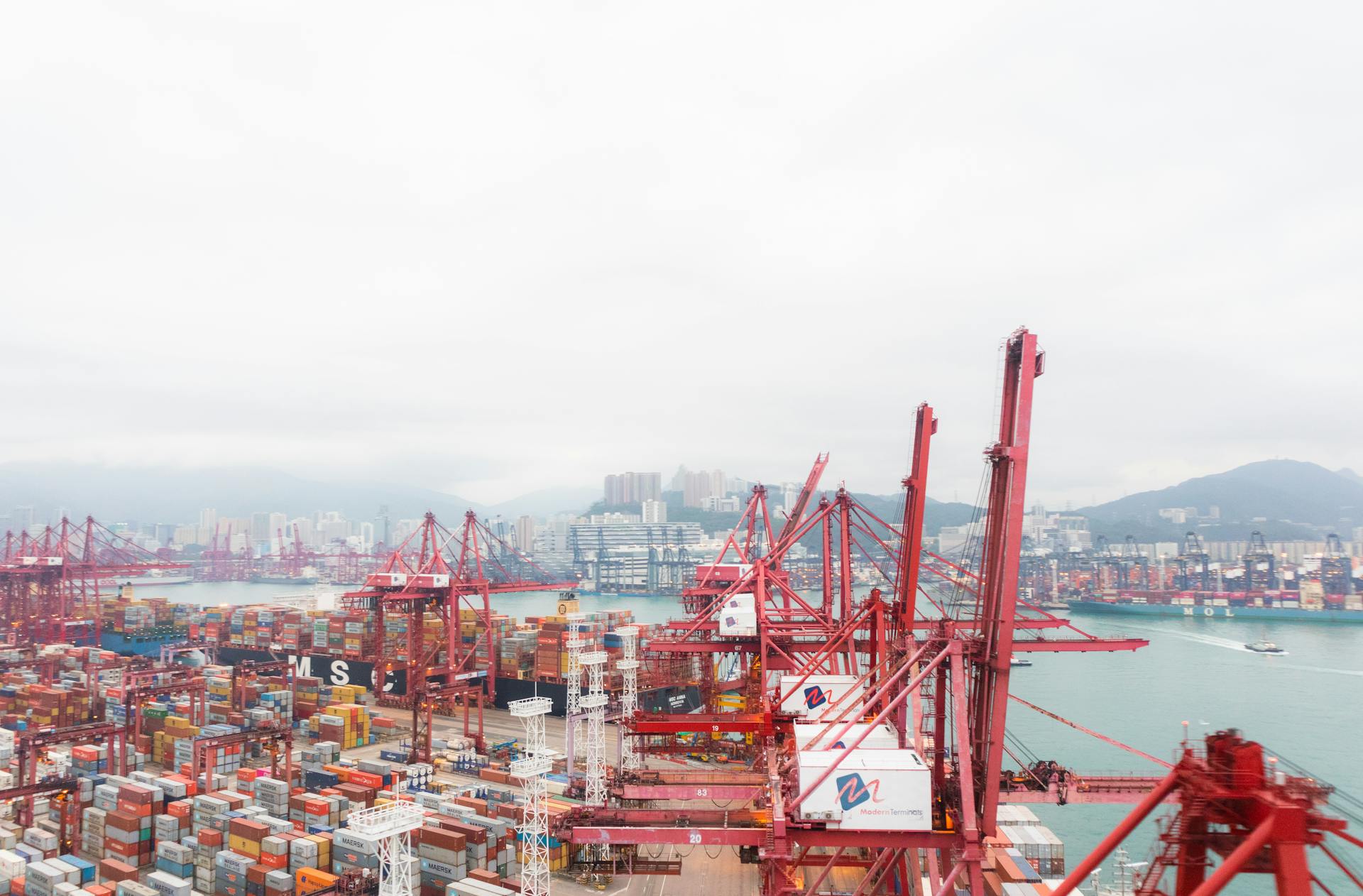
Tema Harbour is a significant source of employment opportunities. Thousands of individuals work in various capacities.
One of the key areas of job creation is port management and administration. This includes tasks such as managing the flow of goods and services, coordinating with other stakeholders, and ensuring the harbour runs smoothly.
Logistics and transportation services are also a major source of jobs. From loading and unloading cargo to transporting goods to their final destinations, these services are essential to the harbour's operations.
Customs and regulatory compliance is another area that employs many people. This involves ensuring that all goods entering or leaving the harbour comply with relevant laws and regulations.
Shipbuilding and maintenance is a critical function that requires skilled workers. From repairing damaged vessels to building new ones, this sector is a significant source of employment.
Here are some of the key areas of job creation at Tema Harbour:
- Port management and administration
- Logistics and transportation services
- Customs and regulatory compliance
- Shipbuilding and maintenance
Opportunities
Tema Harbour is a cornerstone of Ghana's maritime trade, and it's full of opportunities waiting to be seized. Continued investment in port infrastructure and technology can enhance operational efficiency, making it a more attractive option for traders and shippers.
Investing in infrastructure is crucial, as it can help modernize facilities and handle larger vessels and increased cargo volumes. This, in turn, can increase the port's capacity and reduce congestion.
Public-Private Partnerships can lead to innovative solutions and improved service delivery. By engaging private sector stakeholders, Tema Harbour can tap into their expertise and resources, driving growth and development.
Sustainability Initiatives can also position Tema Harbour as a leader in sustainable maritime trade. Implementing environmentally friendly practices can reduce the port's carbon footprint and make it a more desirable option for eco-conscious traders.
Here are some specific opportunities for Tema Harbour:
- Investment in Infrastructure: Continued investment in port infrastructure and technology can enhance operational efficiency.
- Public-Private Partnerships: Engaging private sector stakeholders can lead to innovative solutions and improved service delivery.
- Sustainability Initiatives: Implementing environmentally friendly practices can position Tema Harbour as a leader in sustainable maritime trade.
6. Future Prospects
Tema Harbour is on the cusp of significant growth and innovation. With ongoing projects aimed at expanding capacity, the port is set to maintain its status as the heart of Ghana's maritime trade.
These projects are focused on enhancing operational efficiency, which will likely lead to increased productivity and competitiveness.
Tema Harbour
The Tema Harbour is strategically situated in Ghana's industrial city, Tema, in the Greater Accra Region. It's a pivotal economic hub in West Africa, playing a vital role in Ghana's trade and commerce.
Construction of the harbour began in 1952, during the colonial era. The British government had a plan to develop Ghana's economy, and the harbour was a key part of that plan.
The harbour was designed and built by the British engineering firm, Gailey and Robertson. They did a great job, and the harbour was officially opened in 1962 by Ghana's first President, Dr Kwame Nkrumah.
The construction of the harbour led to the development of a new city, Tema. The city was built to accommodate the workers and staff of the harbour, and it has since grown into a thriving industrial and residential hub.
The Tema Harbour is a busy hub of maritime activity, welcoming a diverse array of vessels to its docks. From cargo ships and tankers to fishing vessels and passenger liners, the harbour is a hive of activity.
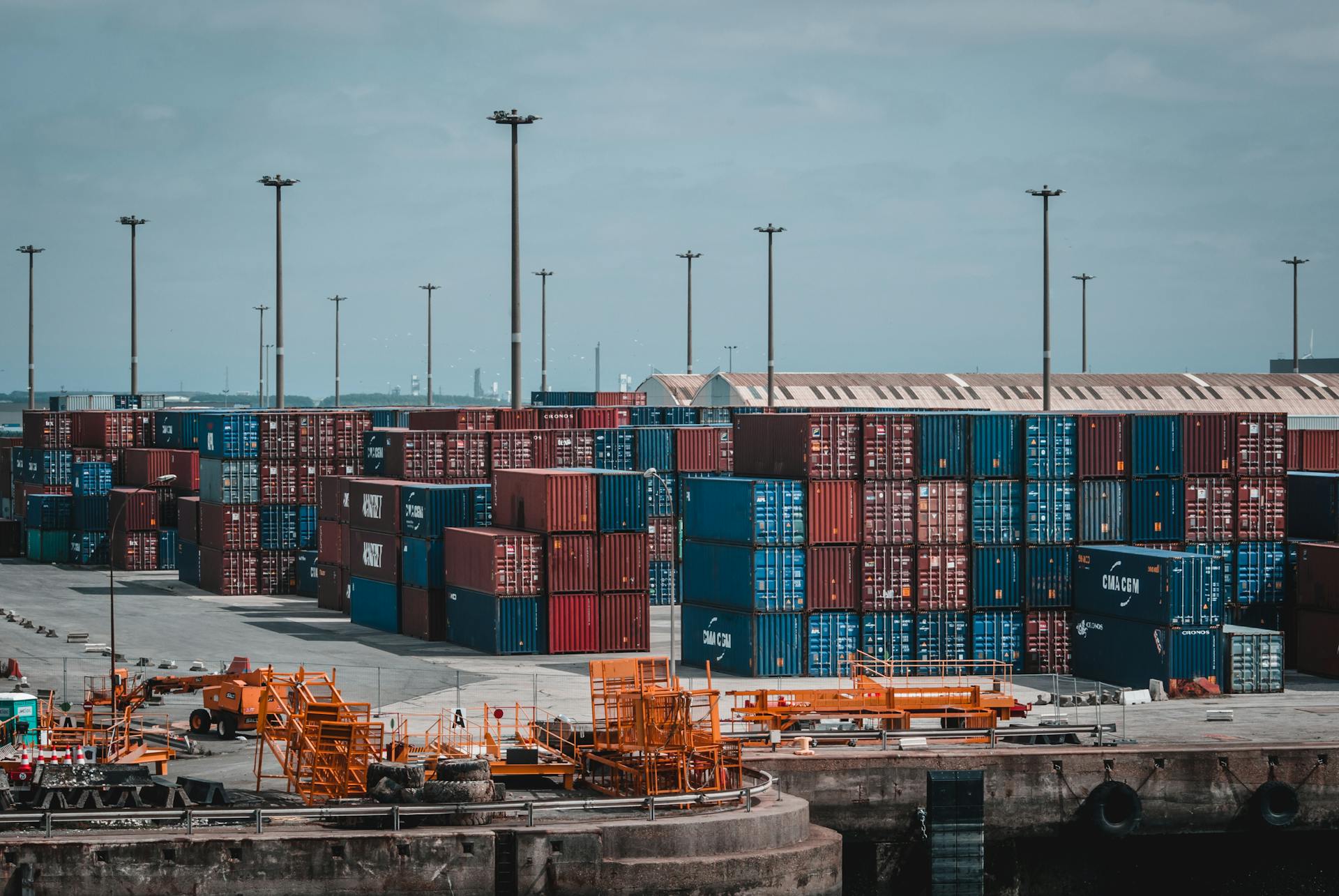
The harbour's strategic location on the Gulf of Guinea makes it an ideal transshipment point for goods destined for other West African countries. This has made the harbour a major hub for regional trade, with goods like vehicles, machinery, and construction materials being imported and exported through the facility.
The harbour is also home to a large fleet of fishing vessels, which operate in the waters of the Gulf of Guinea. These vessels provide a vital source of protein for the nation, and the harbour plays a critical role in supporting the country's fishing industry.
Frequently Asked Questions
What is Tema known for?
Tema is known as Ghana's largest seaport and nicknamed the "Harbour City". It's a thriving city built on the site of a small fishing village, offering easy access to amenities in its 25 communities.
What is the largest harbour in Ghana?
The Port of Tema is Ghana's largest harbour, covering 5.5 million square meters of land area on the eastern coast. It handles over 1,511 vessel calls annually, making it a significant hub for maritime trade.
Featured Images: pexels.com
